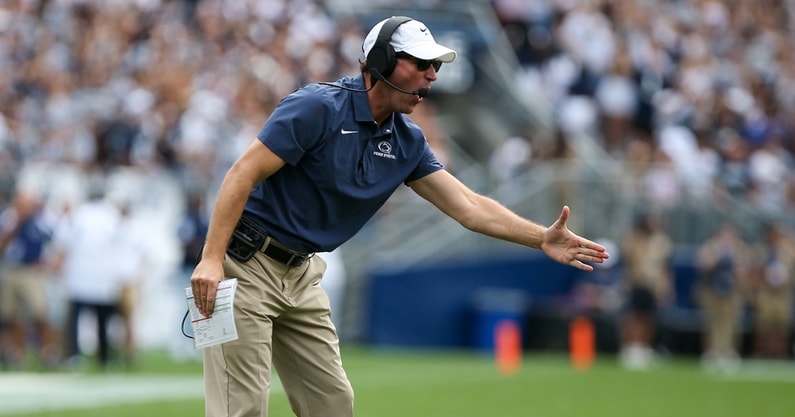Penn State offensive duality and crisis explained Pt. 2

Yesterday, we examined the history of Penn State offensive coordinator Mike Yurcich, his transition to Penn State, and some of the conflicts and challenges his time at Penn State has presented. However, before we get to the on-field implications of yesterday's story we should address something first. Collaborate not declarative We all play a delicate political balance in our work environments each day. Penn State head coach James Franklin has long expressed his policy of being a hands-off head coach that is a "sounding board" for his coordinators rather than an authoritarian decreeing his wishes. It's something he maintained Wednesday during his weekly press conference after practice, "It's more of a sounding board for the offensive coordinator. Very rarely is there something I'm adamant about. Some things, whether its practice schedule or certain things I'm adamant about but very rarely. Typically I'm bringing a guy in and letting him do his job, or I wouldn't have brought him in." When presenting two sides of a story, we tend to see things in a binary, either-or light. The truth is never that simple, and the situation with Penn State's two-tight-end offense may be more collaborative than directive. Something that offensive coordinator Mike Yurcich expressed on Thursday, "But he gives great input each game plan, and it's the same as it was last year and it's very similar to what it was for me at Oklahoma State and, and really at Texas as well. So a lot of supportive input and, you know, stamping out things that maybe he doesn't particularly care for, which is helpful. You got to let your ego down and put everything aside and be able to listen to not just the head coach but every coach in the room." But that doesn't mean it's perfectly harmonious or easy to do. Lastly, coaches can evolve independently of what they've done previously. Yurich has developed some creative formations and play calls during his time at Penn State. One that stands out is his use of the full-house backfield with balanced tight ends. This formation allows Penn State to run in either direction with two lead blockers and not give a tell in short-yardage situations. Before we get into the weeds of how things have gone this season for Penn State, it's important to point out that Yurich is an intelligent coach with great concepts. However Yurcich's offensive growth has occurred, either by the direction of others or as an independent decision, doesn't matter. There are some issues in the current Penn State offense that are troubling. We'll get to those now.